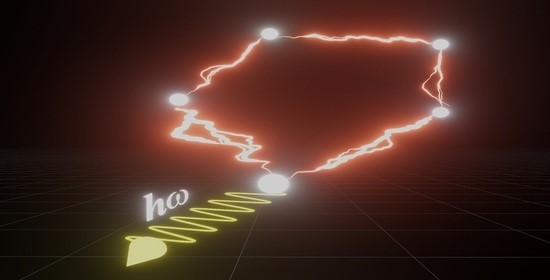Julio 7, 2023
10:00
Towards Room-Temperature Integrated Quantum Photonics through Reduction of the Quantum Decoherence Using Machine Learning

Where and when
Featured speakers

Prof. Pablo Aitor Postigo
Professor of Optics
Read bio
Dr. Pablo Aitor Postigo received his M.Sc. degree in Solid State Physics from the University of Basque Country in 1992 and a Ph.D. in Telecommunication Engineering from the Polytechnic University of Madrid in 1996. He was a Postdoctoral Associate at the Department of Electrical Engineering of the Massachusetts Institute of Technology (MIT) from 1996 to 1999. He worked in on-chip optoelectronic integration of lasers with VLSI electronics. In 2005, he became a permanent researcher at the Institute of Micro and Nanotechnology (IMN-CSIC) in Spain, where he was the head of the Group of Nanophotonic Devices. His work is focused on the design, fabrication, and characterization of nanophotonic devices, including photonic crystal lasers, solar cells, single-photon emitters, and biomedical devices. Among other findings, in 2015, his group demonstrated the first near-thresholdless laser at room temperature. He is a co-author of more than 100 international publications. He has participated in several European Projects, Networks of Excellence, COST Actions, and EU projects. Since July 2021, he has been a Professor of Optics at the Institute of Optics of the University of Rochester where he researchers in quantum photonics, quantum photonic sensing, microlasers and photonic biomedical applications.
Webpage: https://www.postigolab.com/
The development of on-chip, CMOS-compatible quantum photonics is critical for future scalable quantum communications, quantum computing, and quantum sensing. Integrated photonic waveguides, photonic resonators, and single-photon emitters are essential building blocks for such a purpose. In this talk, I will present how machine learning (ML) can enhance the quantum properties of these building blocks, specifically the indistinguishability (I) of the generated single photons, with a further decrease in quantum decoherence. The model has been numerically evaluated through finite-difference time-domain (FDTD) simulations showing consistent results. Also, we explored a hybrid slot-Bragg nanophotonic cavity to generate indistinguishable photons at RT from various quantum emitters through a combination of numerical methods. To relax the fabrication requirements (slot width) for near-unity I, we used an ML algorithm that provides the optimal geometry of the cavity. [1] Finally, we have developed a theory for estimating I in a two-emitter system with strong dephasing coupled to a single-mode cavity. We have derived an analytical expression of I as a function of the distance between the emitters, cavity decay rate, and pure dephasing rate. The results show how the requirements of the cavity for high I change with the strength of the dipolar interaction. We propose a new interpretation of the I value, which allows us to estimate its behavior with larger systems (i.e., systems with more than two emitters). We performed numerical simulations of five dipole-coupled emitters to find the optimal configuration for maximum I. For the optimization process, we developed a novel ML scheme based on a hybrid neural network (NN)-genetic algorithm (GA) to find the position of each emitter to maximize I. [2] The optimization procedure provides perfect I(i.e., I = 1) in arbitrary low Q cavities, offering relaxation of the cavity parameters and favoring emission from quantum emitters at room T.
References:
[1] Guimbao et al. ACS Photonics (2022), 9, 6, 1926-1935.
[2] Guimbao et al. Nanomaterials2022, 12(16), 2800
